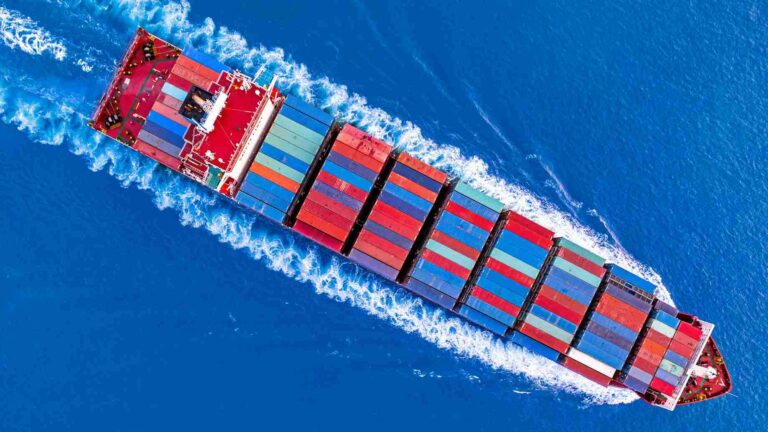Shipment Insights: Deciphering Shipping Success Essentials. Have you ever considered the intricate process that occurs in the background to ensure timely delivery of your online purchases, fresh food from your local grocery store, and the parts that make up our tools?
The answer lies in the complicated world of shipment logistics, which is a precise dance of technologies, processes, and strategy decisions. A journey through the worlds of freight management solutions, where each successful arrival is like a concert put on by an understanding of the shipment lifecycle.
Come with us as we solve the puzzles and show you the important parts that turn the seemingly simple task of transportation into a complex and effective dance of supply chain execution.
I. Understanding Shipment Lifecycle
A. Definition of Shipment Lifecycle in Transportation
The different stages a shipment goes through from its origin to its destination are referred to as the shipment lifecycle in transportation. From the time the goods are packed and loaded onto a transport vehicle until they arrive at the specified location, it covers the entire journey. Understanding the shipment lifecycle is important because it helps to speed up and improve the transportation process, ensuring that goods are delivered quickly and efficiently.
For successful supply chain performance in freight management logistics, it is important to have a full understanding of the shipment process. Coordinating and directing the movement of goods using different modes of transportation, like trucks, ships, planes, and trains, is part of this. To make sure the shipment has a smooth journey, the logistics team has to figure out all the complicated paths, transportation modes, and rules.
B. Key Stages: From Origin to Destination
Several crucial stages make up the shipment process, all of which are essential for transportation. Among these stages are:
Order Processing and Fulfillment:
- At the onset, orders are processed, and goods are prepared for shipment.
- Freight logistics professionals ensure the right products are picked, packed, and labeled accurately.
Loading and Transportation:
- Once packed, goods are loaded onto the chosen mode of transportation.
- Efficient planning of transportation routes and methods is essential for timely delivery.
Transit and Tracking:
- During transit, real-time tracking technologies come into play.
- Shipment tracking software, integrated with GPS and sensors, provides visibility into the location and condition of the goods.
Delivery and Unloading:
- The final stage involves unloading the goods at the destination.
- Supply chain management software aids in coordinating the unloading process and managing inventory.
II. Advanced Tracking and Visibility
A. Role of Real-Time Tracking Technologies
Real-time tracking tools have revolutionized the management and monitoring of shipments throughout their entire journey. These technologies give users real-time visibility of the whereabouts of the goods, allowing them to plan ahead and be ready for any disruptions.
Software for tracking freight is a key part of using GPS and sensors together. Monitoring a person’s location in real time with GPS tracking is possible, and sensors collect data on temperature, humidity, and shock. This extensive tracking capability ensures the integrity of the goods throughout their journey.
B. GPS and Sensor Integration for Shipment Visibility
By providing a wealth of data beyond location, integrating GPS and sensors improves shipment visibility. GPS gives correct geographical coordinates, which lets logistics pros see where packages are at all times on a map. At the same time, sensors send information about the surroundings around the goods.
For instance, sensors can monitor temperature changes for fragile or perishable goods. Especially during lengthy journeys or when traveling through different climates, this information is essential for maintaining the cargo’s quality and safety.
C. Improving Decision-Making Through Enhanced Visibility
More accurate tracking tools allow for better visibility, which leads to better decisions all along the supply chain. With real-time information, logistics teams can deal with delays, detours, or bad weather before they happen. This proactive strategy lessens the impact of disruptions, which eventually results in more dependable and effective transportation services.
In this context, supply chain integration is critical to make sure that all the right people can see the same real-time data. Collaborative platforms facilitate smooth contact between makers, shippers, and carriers, facilitating a coordinated reaction to shipment challenges.
III. Data-Driven Decision-Making
A. Leveraging Shipment Data for Analysis
In this age of digital change, data has become an important tool for improving freight logistics. Shipment data from different sources, such as tracking tools, sensors, and supply chain management software, offers a wealth of information for analysis.
Logistics pros can learn about the effectiveness of various transportation routes, carriers, and modes of transportation by utilizing this data. By looking at old data, you can find patterns and trends that help you make better decisions about future orders.
B. Predictive Analytics for Demand Forecasting
The next step in making decisions based on data is predictive analytics, which predicts future trends and demand patterns. This is especially useful in the context of freight logistics management, where precise demand predictions can have a big impact on inventory management and total supply chain efficiency.
Predictive analytics models use complex formulas to look at past shipment data, market trends, and outside factors to guess what people will want to buy in the future. This kind of planning ahead helps logistics teams make the best use of their supplies, get ready for busy times, and better distribute their resources.
IV. Route Optimization Strategies
A. Utilizing Technology for Efficient Route Planning
Determining the most efficient modes of transportation is one of the critical difficulties in freight logistics. Through route improvement methods, technology is a key part of solving this problem. Advanced software programs look at many things, like distance, traffic, and the types of transportation that can be used, to find the best ways for each shipment.
Supply chain integration makes sure that this route improvement fits in with the bigger goals and needs of the business. For instance, if lowering costs is important, the paths may be picked so that they use the least amount of fuel and charge the fewest tolls.
B. Reducing Transit Times and Enhancing Efficiency
Less time spent waiting for transit and better general transportation efficiency come from planning routes well. Lessening the number of unnecessary stops and delays helps packages get to their destination faster, which makes customers happier and helps with inventory management.
To continuously improve routes based on real-time data, freight logistics pros can use supply chain management software. Adaptive algorithms have the ability to dynamically alter routes in response to factors such as heavy traffic or unexpected road closures.
C. Adapting Routes Based on Real-Time Conditions
For modern freight logistics, it is critical to adjust routes based on current conditions. Unexpected events can impact the planned paths, such as accidents, weather disruptions, or rapid changes in demand. Adaptive route optimization techniques make it possible for logistics teams to quickly address these issues, minimizing disruptions and maintaining the supply chain’s integrity.
V. Risk Management and Contingency Planning
A. Identifying and Mitigating Risks in Transportation
The transportation of goods inevitably entails a number of risks, despite careful planning and modern technologies. These risks include everything from natural disasters and accidents to changes in the law and events in world politics. In freight logistics, proactive risk management means looking for possible risks and making plans for what to do if they happen.
Supply chain integration facilitates stakeholder teamwork and real-time contact, enabling a coordinated reaction to possible risks. Looking at old shipment data can also help find risk factors that keep happening, which lets logistics teams take steps to stop them.
To sum up, effective transportation in freight management logistics depends on having a deep understanding of the entire shipment process and using new technologies in a smart way. Real-time tracking, making decisions based on data, route planning, and good risk management are all important parts of the supply chain that work together to make it reliable and efficient. Businesses can be much more successful in their transportation efforts if they combine these factors and use cutting-edge technologies.



